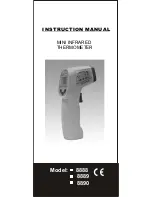
DE
GB
FR
65
3.2 Montage des Außenfühlers
●
Entfernen Sie die Abdeckplatte (
1
) des
Gehäuses und befestigen Sie das
Gehäuse mit 2 Schrauben über den
Befestigungsbohrungen (
8
) an der
Wand.
☞
Das Gerät muß in der Einbaulage, wie
in nebenstehender Abbildung gezeigt,
an der Wand befestigt werden! Die
Kabeleinführung (
3
) muß nach unten
zeigen.
●
Anschlußkabel (
4
) mit min.
2 x 0,75 mm
2
bauseits verlegen und
von unten durch die Kabeleinführung
(
3
) hereinziehen.
Durch eine entsprechende Kabel-
führung und sorgfältige Arbeitsweise
ist die Wasserdichtheit des Fühlers
sowie des Gebäudes sicher zu stellen.
3.3 Elektrischer Anschluß
●
Verdrahten Sie die Anschlußklemmen
entsprechend dem Anschlußschema
gemäß der nebenstehenden
Abbildung.
●
Stellen Sie sicher, dass die Gehäuse-
dichtung korrekt im Gehäuseoberteil
(
1
) befestigt ist und drücken Sie das
Gehäuseoberteil auf das Gehäuse.
●
Befestigen Sie das Gehäuseoberteil (
1
)
mit den beiliegenden Schrauben am
Gehäuseunterteil (
2
).
3.2 Fitting the external sensor
●
Remove the cover panel (
1
) from the
housing and secure the housing with
two screws to the fixing holes (
8
) in
the wall.
☞
The appliance should be fixed to the
wall in the position shown in the
illustration. The wiring access hole (
3
)
should point downwards.
●
Lay the power cable (
4
) onsite (min.
2 x 0.75 mm
2
) and feed in from the
bottom, through the access hole (
3
).
Lay the wiring carefully to ensure that
the sensor and the building itself
remain completely watertight.
3.3 Electrical connection
●
Connect the appliance to the terminals
as in the corresponding wiring
diagram (shown in the diagram).
●
Ensure that the housing seal is
correctly attached to the top of the unit
(
1
) and press the top onto the housing.
●
Attach the top of the housing (
1
),
using the screws supplied, to the
bottom section (
2
).
3.2 Montage de la sonde extérieure
●
Retirez la plaque de recouvrement (
1
)
du boîtier et fixez le boîtier avec deux
vis par les alésages de fixation (
8
) sur
le mur.
☞
L'appareil doit être fixé au mur en
position d'encastrement tel que montré
sur la figure! Le passage de câble (
3
)
doit être dirigé vers le bas.
●
Posez des câbles de raccordement (
4
)
d'au moins. 2 x 0,75 mm
2
non fournis
et les passer par le passage de câble
(
3
).
Il faut veiller à une bonne étanchéité
de la sonde et du bâtiment par un
passage de câble correspondant et un
mode de travail soigneux.
3.3 Raccordement électrique
●
Câblez les bornes de raccordement
d'après le schéma de connexion et la
figure ci-contre.
●
Assurez vous que la garniture
d'étanchéité est correctement fixée
dans la partie supérieure du boîtier (
1
)
et enfoncez la partie supérieure sur le
boîtier.
●
Fixez la partie supérieure (
1
) du
boîtier avec les vis jointes sur la partie
inférieure (
2
) du boîtier.
Summary of Contents for VRC 420
Page 52: ...52 ...
Page 56: ...56 1 2 3 3 7 8 9 4 VRC_VC_054 0 VRC_VC2_021 0 ...
Page 60: ...60 bar 2 1 3 0 Party Sa 15 C C VRC VCC 1 0 2 3 1 2 3 3 4 3 VRC VC2_022 0 ...
Page 68: ...68 4 4 3 3 1 2 5 DCF 0 AF VRC_DCF_003 ca 40 mm 4 5 10 mm DCF 0 AF VRC_DCF_004 ...
Page 76: ...76 ϑ ϑ 3 3 3 2 3 3 4 2 230V 3 3 2 3 3 VRC VC2_002 2 ...
Page 78: ...78 230V 3 2 3 3 3 4 3 3 3 2 3 3 3 VRC 420 VRC 420 VRC VC2_005 1 ...
Page 82: ...82 Party Sa 15 C C VRC VCC 1 0 2 3 1 2 3 1 2 2 1 7 6 5 3 4 VRC 420 VRC VC2_020 0 ...
















































